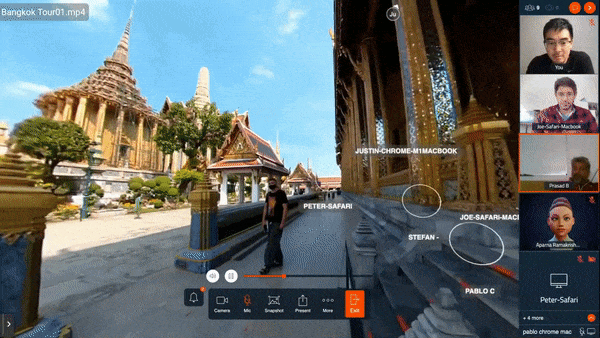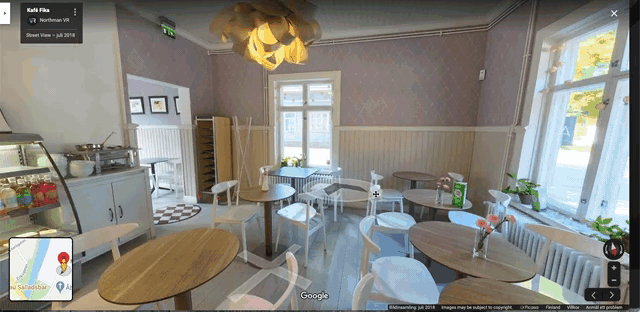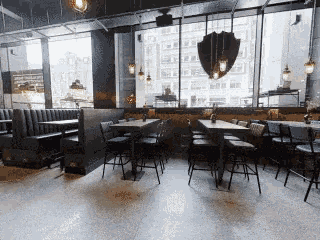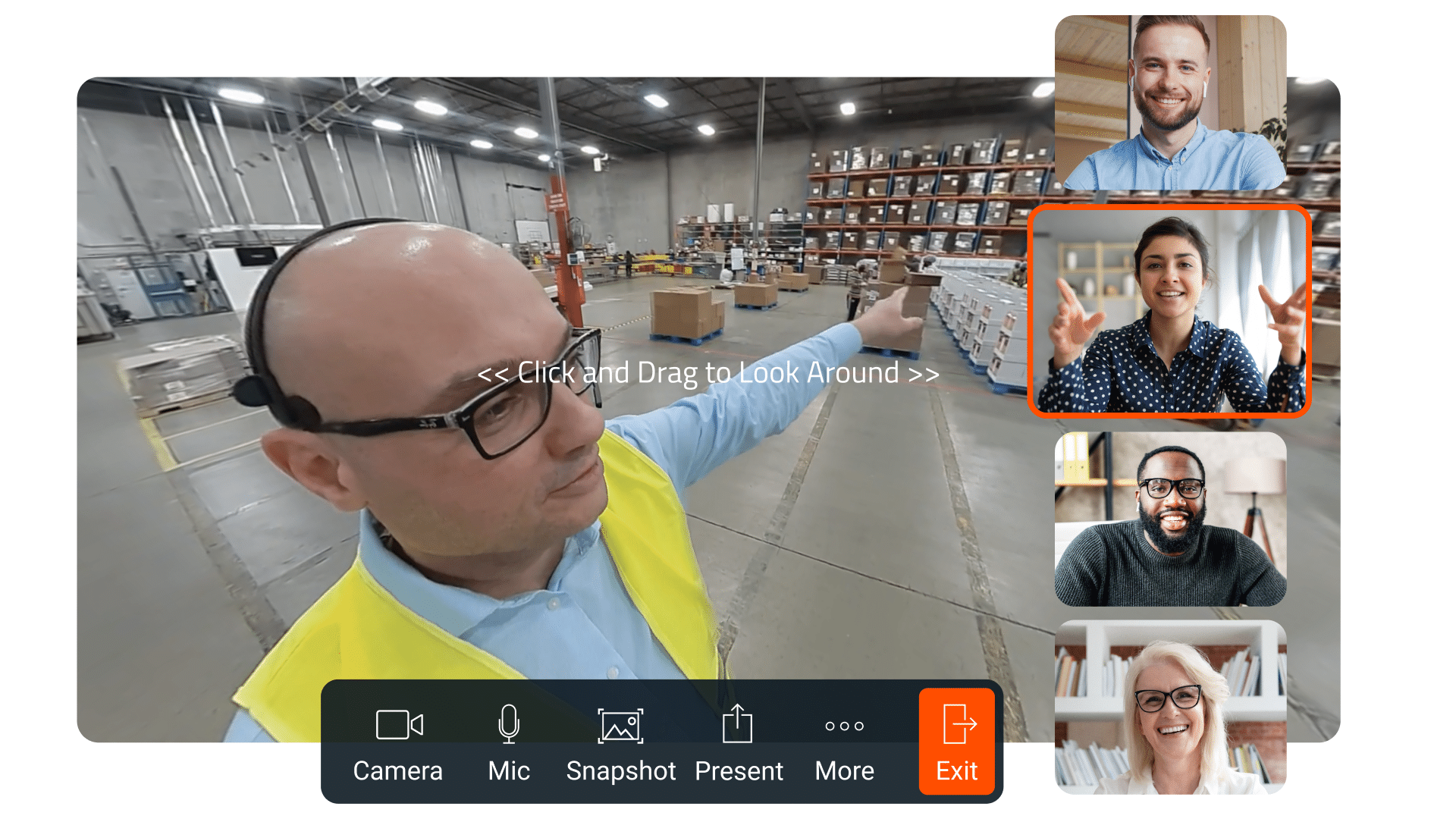What is a 360° Virtual Tour?
360° virtual tours allow guests to virtually explore a real-world location with the ability to look around freely – almost like you’re standing there physically.
For most purposes, such virtual tours are achieved through one of several technologies: 360° photos, 360° video (either recorded or real-time), or 3D spatial scans (sometimes called “digital twins”).
The popularity of 360° virtual tours skyrocketed during the COVID pandemic, as social distancing measures and travel restrictions made it difficult for people to travel. But even as the world returns to a “new normal”, 360° virtual tours continue to play a critical role in business.
Increase in demand for virtual tours during the pandemic led to advancements in technology like Avatour, making the experience significantly better and easier to create. They now provide a better way to reach and engage new and existing customers. As a result, virtual tours have become widely adopted by businesses across industries.
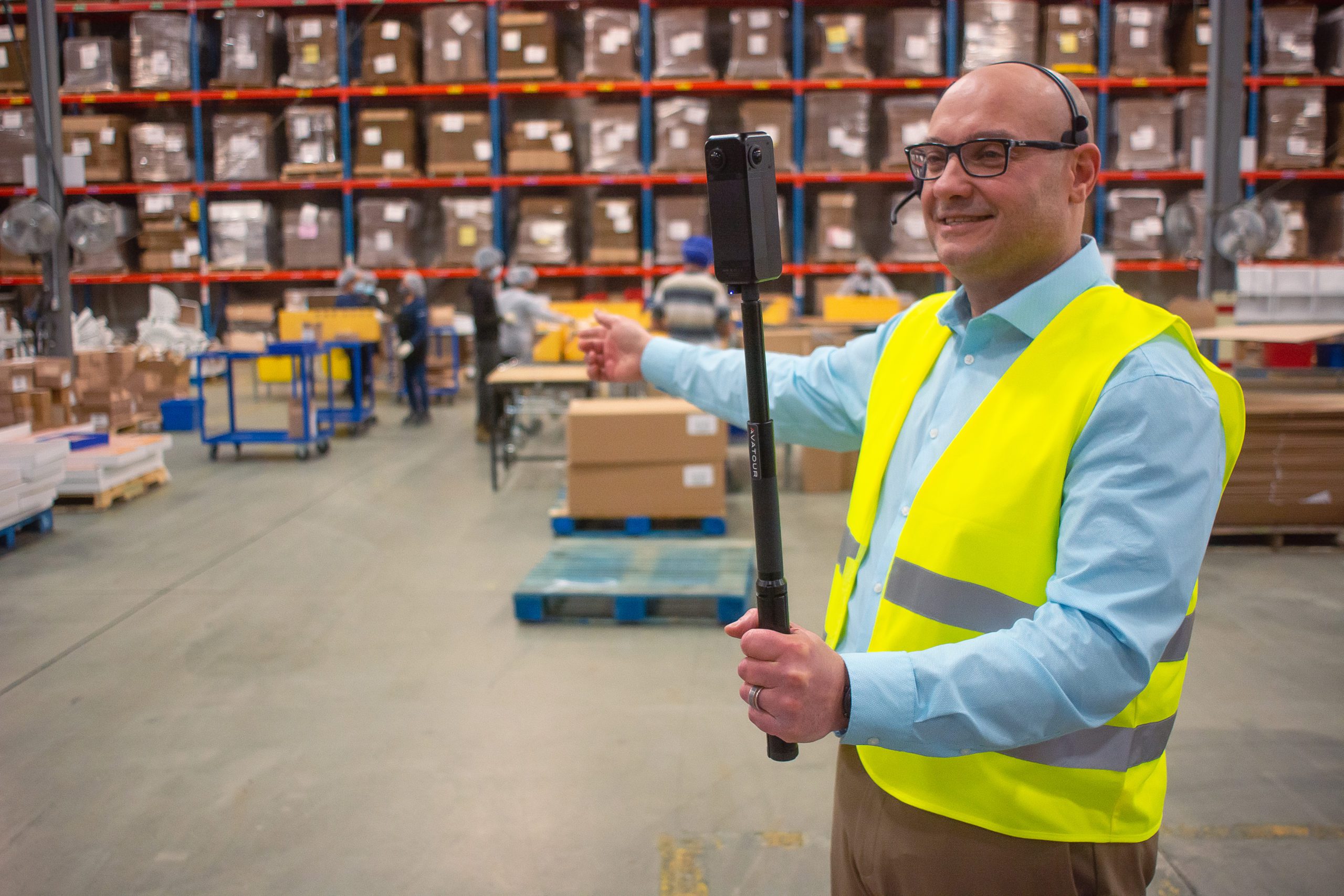
Benefits of 360° Virtual Tours
Before diving into the various types of technologies available to create and experience 360° virtual tours, it’s important to understand the benefits they deliver to your business.
Convenience
Virtual tours provide a convenient way for new and existing customers to explore the business without leaving their desk. Depending on the purpose of the tour, an in-person visit may not entirely be needed.
Cost Savings
Traveling in-person can be a significant expense for some customers. Virtual tours are a cost-effective way to showcase the business, products, and services that you offer.
Expand Reach
Virtual tours make it possible for guests (customers, stakeholders, team members) to explore your business from anywhere in the world. Without geographical limitations, you can engage a much larger audience and invite them to experience the tour.
Competitive Advantage
Set yourself apart from competitors by providing a unique and innovative way to showcase your space and offerings.
Reduce Carbon Footprint
Travel, especially air travel, makes a significant impact on the environment. Reducing the need to travel even slightly can drastically improve a business’s annual carbon footprint.
Types of 360° Virtual Tours
360° Photo Tours
360° photo tours are created by taking multiple 360° photos and then stitching them together to form an integrated experience. Guests can then navigate through the tour by clicking and dragging or using their device’s gyroscope to move around the space.
Advantages of 360° Photo Tours
- High Visual Quality: 360° photos may be captured at a very high resolution and dynamic range to produce very detailed images of the entire environment.
- More Accessible: Unlike other forms of virtual tours, 360° photo tours do not require specialized equipment. Most 360° cameras will suffice.
Disadvantages of 360° photo tours
- Limited interactivity: Photo tours are the least interactive form of virtual tours.
- Lower level of immersion: 360° video tours provide a more immersive experience compared to 360° photo tours.
- Static: 360° photo tours are limited to static scenes.
Spatial Capture – Digital Twins
Spatial capture uses a combination of standard cameras with advanced analysis and sensors to collect both visual imagery and depth information. This information is then used to create a digital 3D model of the space, which can be viewed and navigated digitally. Similarly to 360 photos, spatial captures record a single “snapshot” of a location in time, but rather than focusing on visual quality, they focus on spatial fidelity.
Advantages of Spatial Capture
- Full 3D Interactivity: Spatial capture allows an image of the space to be rendered from any location within it. As a result, the scans allow guests to navigate through the space more freely, compared to 360° photo or video tours.
- Dimensional Accuracy: Spatial capture tours, when captured and processed correctly, provide highly accurate representations of the dimensions of a space and the objects within it. This level of accuracy is particularly useful in industries such as architecture, construction, and engineering, and measurements taken from the “digital twin” can be used to inform work in its real-life counterpart.
Disadvantages of Spatial Capture
- Visual quality: Spatial captures typically contain artifacts and other rendering errors that make their visual quality significantly inferior to photo and video captures. This makes spatial captures of limited use for many marketing applications.
- Technical requirements: Spatial capture tours typically require specialized hardware, software, and skills to create, which limits their viability for some use cases.
- Time-consuming: Creating a spatial capture tour can be a time-consuming process that requires careful planning and coordination, as well as post-production work to create the final product.
- Static: Similar to 360° photo tours, spatial capture is a static form of an immersive experience.
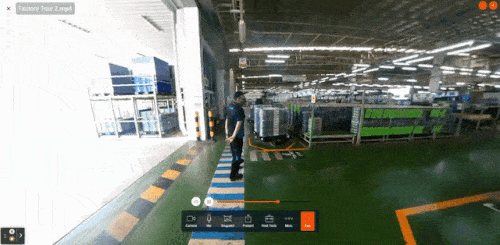
360° Video Tours (Live or Recorded)
Instead of being composed of multiple photos stitched together, 360° video tours consist of a continuous video recording of a location or environment. Because they capture action and not just a snapshot, 360° video tours are inherently more dynamic than either photo tours or spatial capture. Guests can experience the environment in motion, including interactions with the people and other components of the scene.
360° video tours can be conducted in two distinct ways: either using pre-recorded video, or a real-time 360° video conferencing solution such as Avatour. Pre-recorded 360° video can be used for “evergreen” content, while real-time tours are great for real-time interaction with on-site personnel, or for getting remote access to facilities that change frequently.
Advantages of 360° Video Tours
- Ease of use: 360° video tours are easy to use and require no special software or hardware beyond a device with internet access and the ability to play video.
- Realism: 360° video tours provide a realistic and immersive experience for the viewer, allowing them to feel as if they are physically present in the space being showcased.
- Time-efficient: Creating a 360° video tour is typically far less time-consuming than creating a spatial scan.
Disadvantages of 360 Video Tours
- Limited “Exploration”: Guests are limited to the path in which the video was recorded without an option to walk around freely as you might have with spatial scans.
Use Cases
Facility & Warehouse Tours: invite new and existing customers, stakeholders, subject matter experts to walk your facility, virtually. These tours are typically for health & safety inspections, marketing & sales tours, or gemba walks.
Construction Site Tours: conduct progress updates remotely with clients, investors, and other key stakeholders. Alternatively, showcase completed projects to prospective clients and investors.
Home & Real Estate Tours: host virtual open houses to help clients pre-screen properties, and feel more comfortable about purchasing sites “unseen”.
Education & Tourism Tours: whether because of global shutdowns or simply to provide an experience for those who cannot travel, education and tourism virtual tours have become an increasingly popular way to teach and educate. Examples include virtual museum tours or to teach about sustainability via 360° diving explorations.
Campus Tours: invite prospective students to explore the campus before ever stepping foot in-person. This is especially useful for international or out of state students who may not be able to physically visit the campus before enrollment.
Hospitality & Venue Tours: these are a great opportunity to “try before you buy,” giving prospective guests or event holders a closer look of the location.
About Avatour
Avatour brings virtual tours to life with real-time 360° video capture. Host live and recorded 360° virtual tours with guests from anywhere in the world.
Click here to learn more about Avatour or book a demo to try out the platform yourself.

